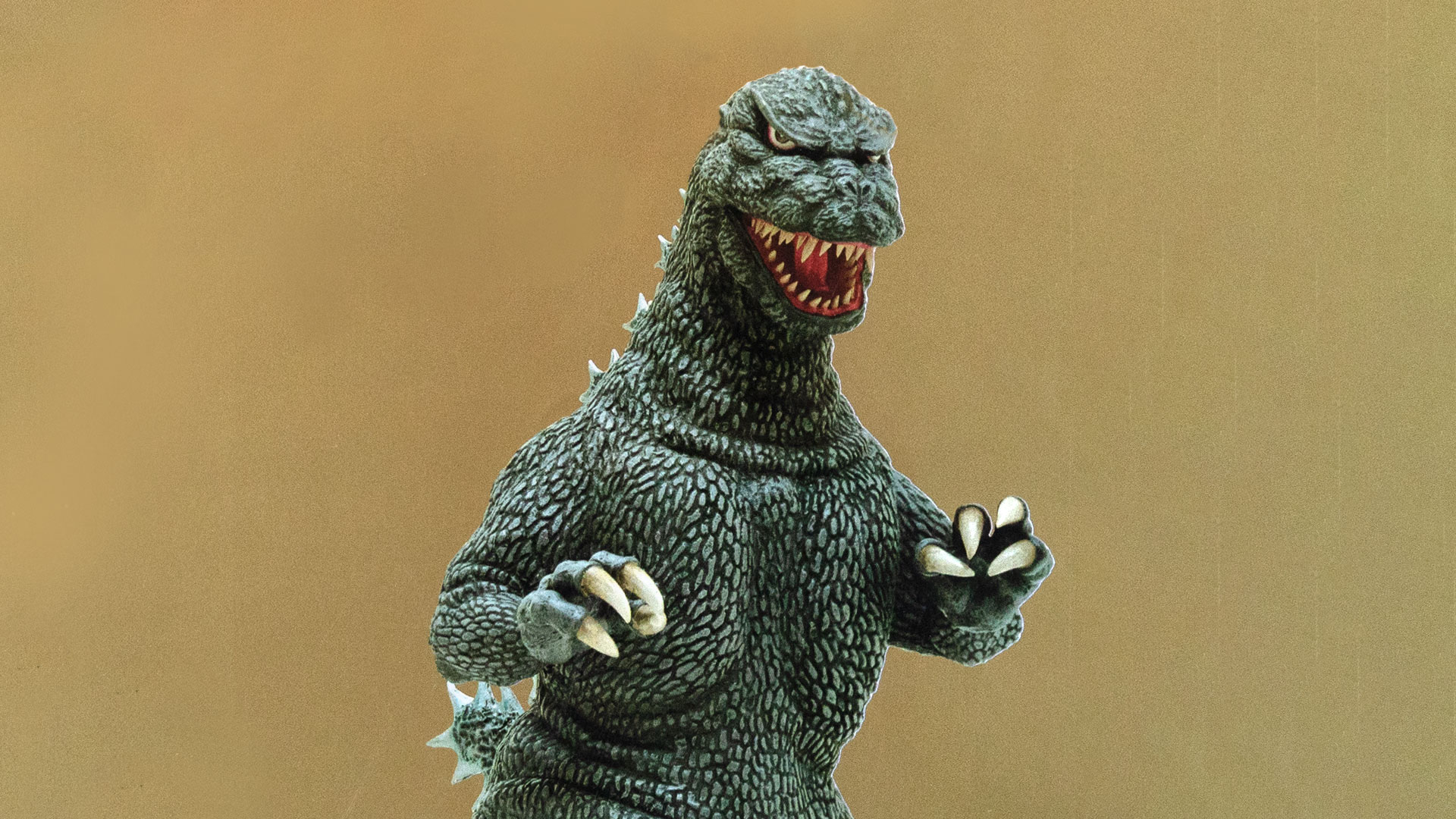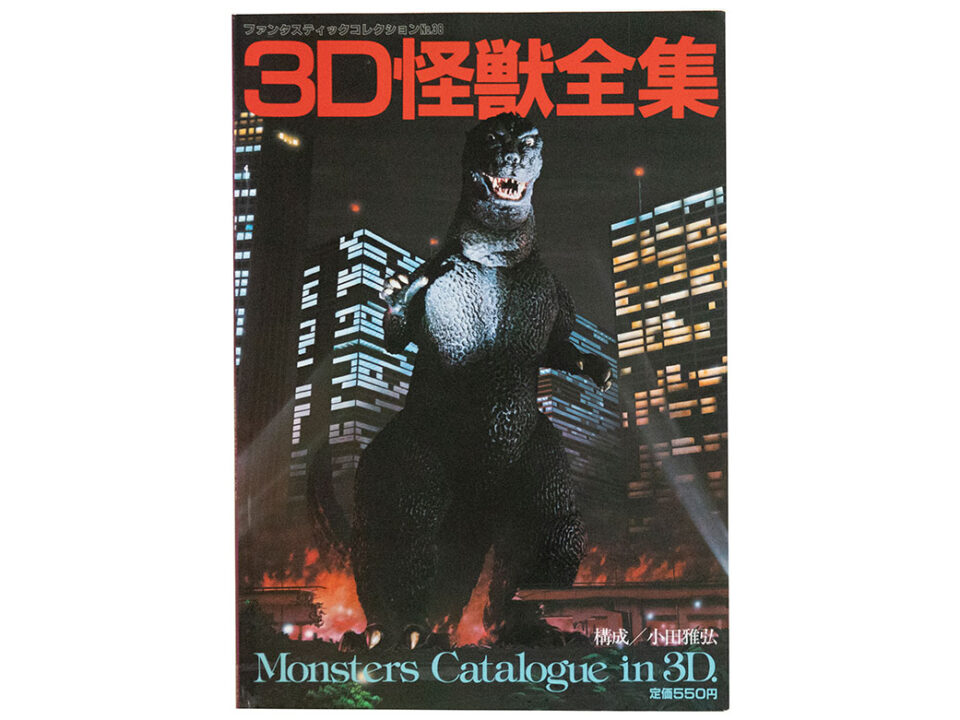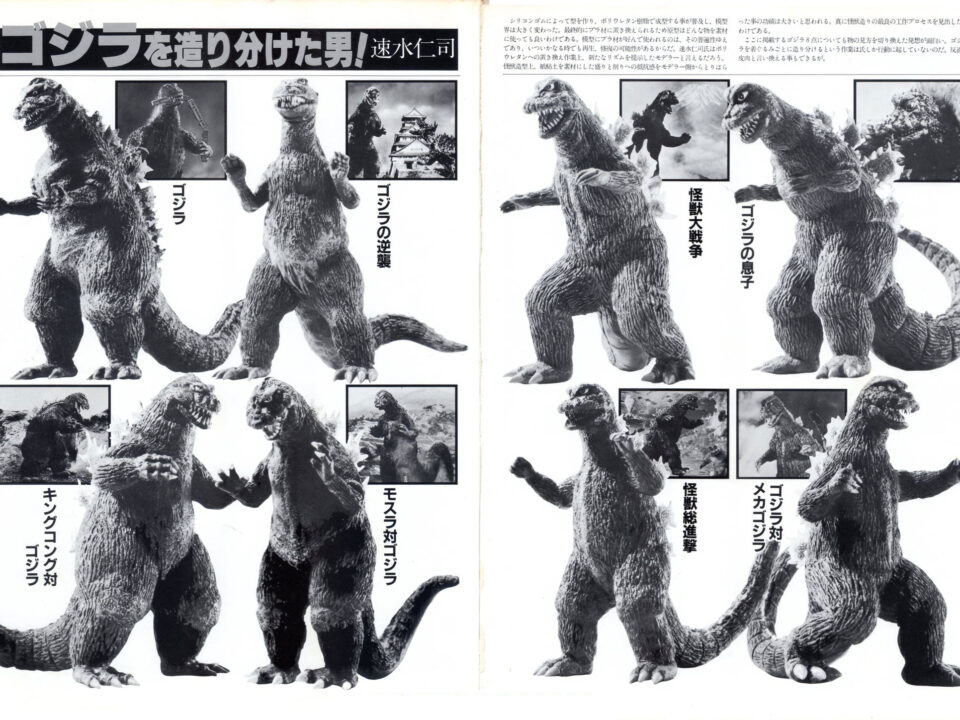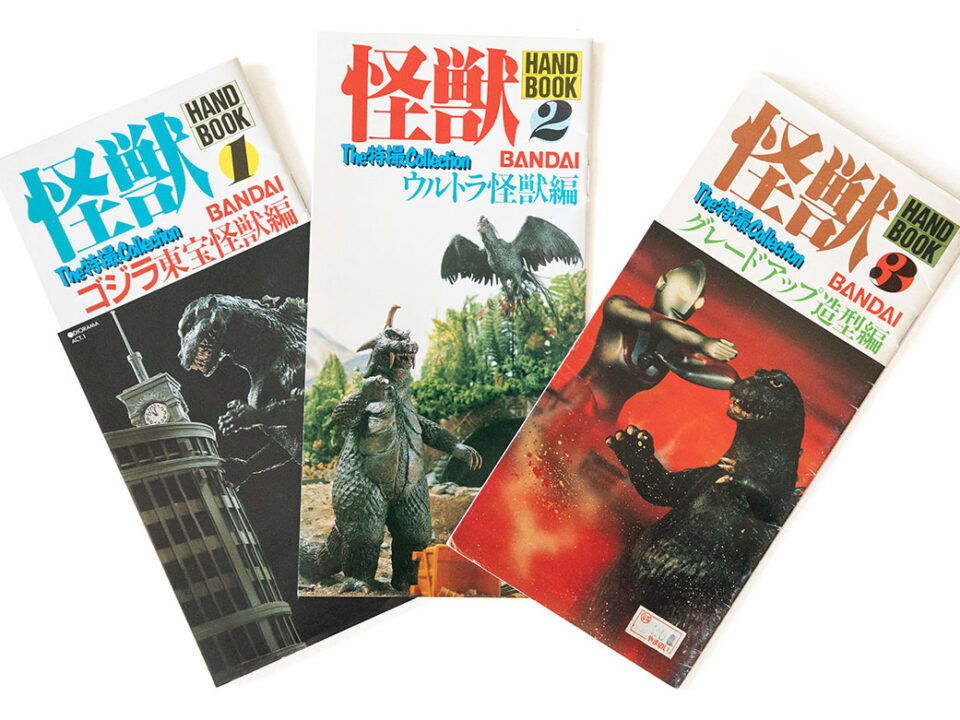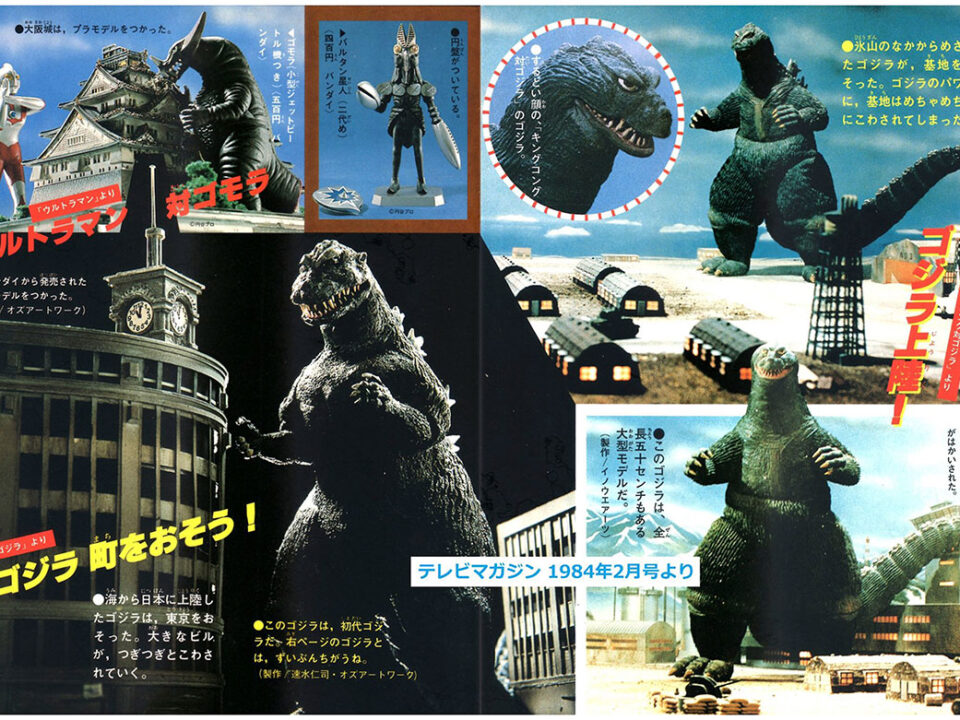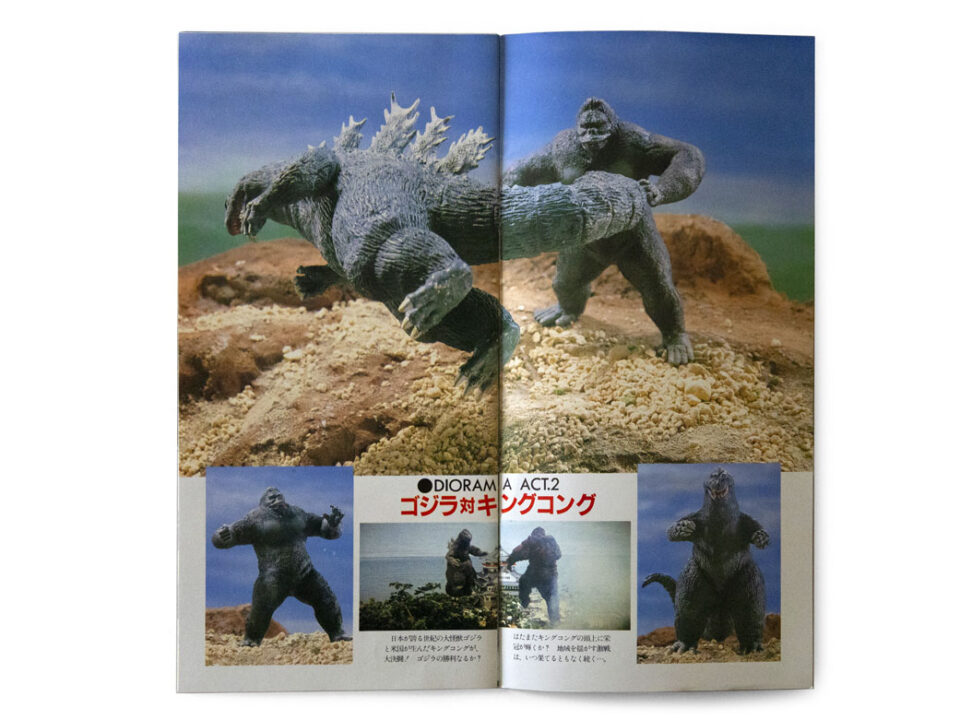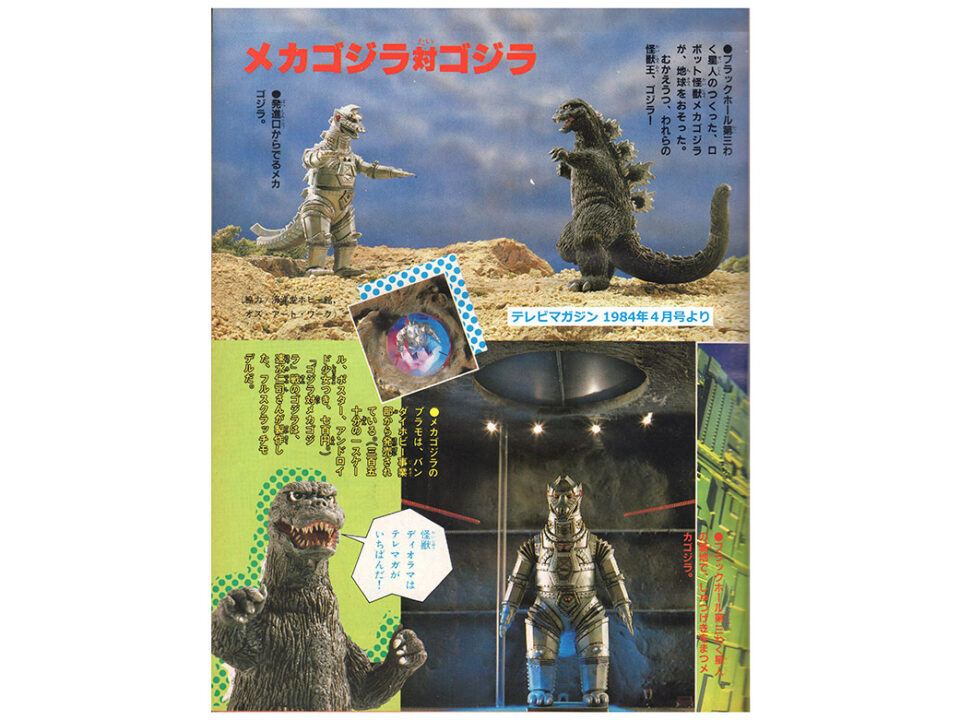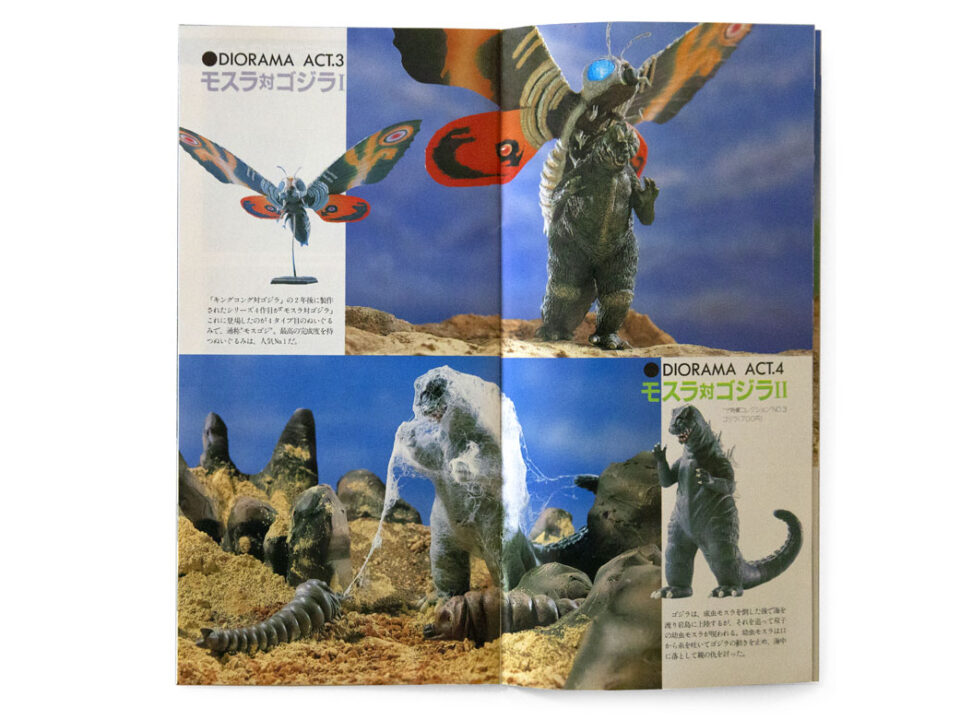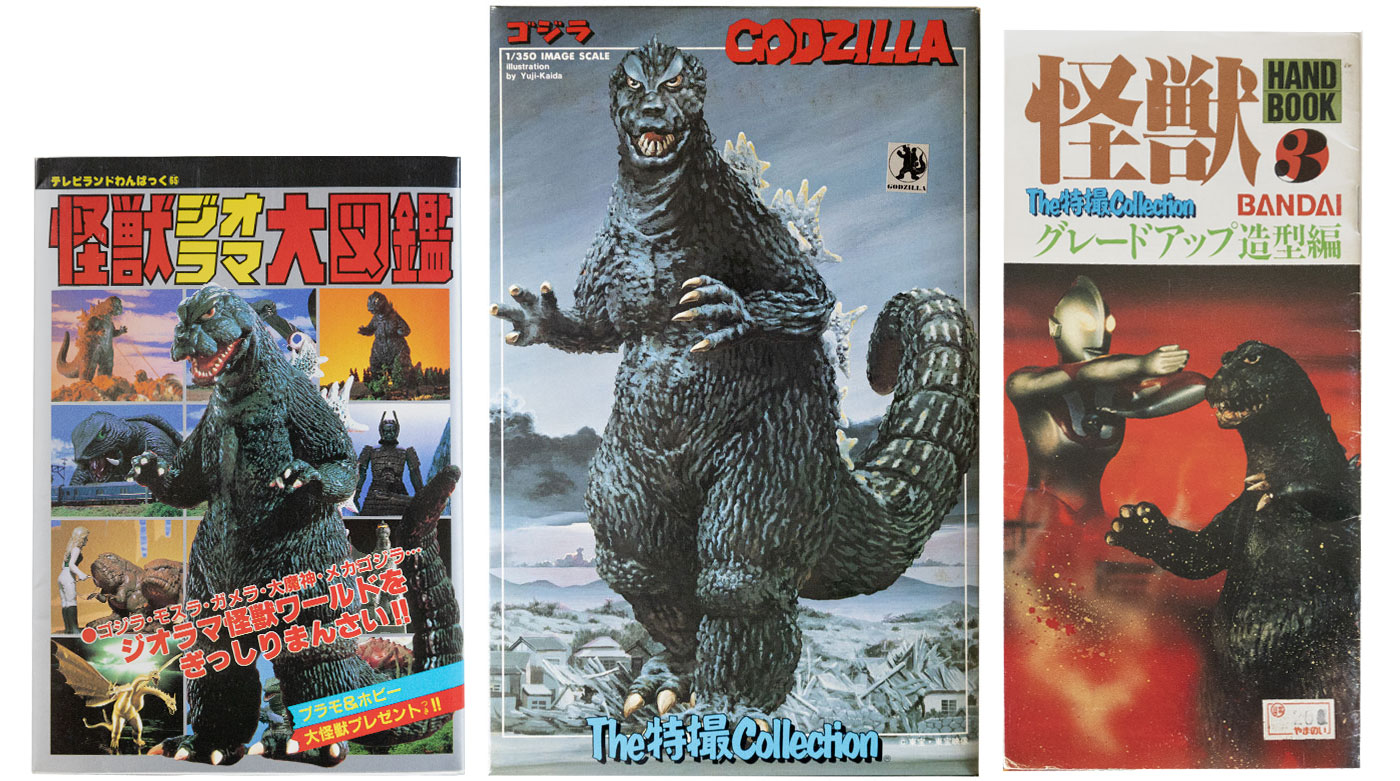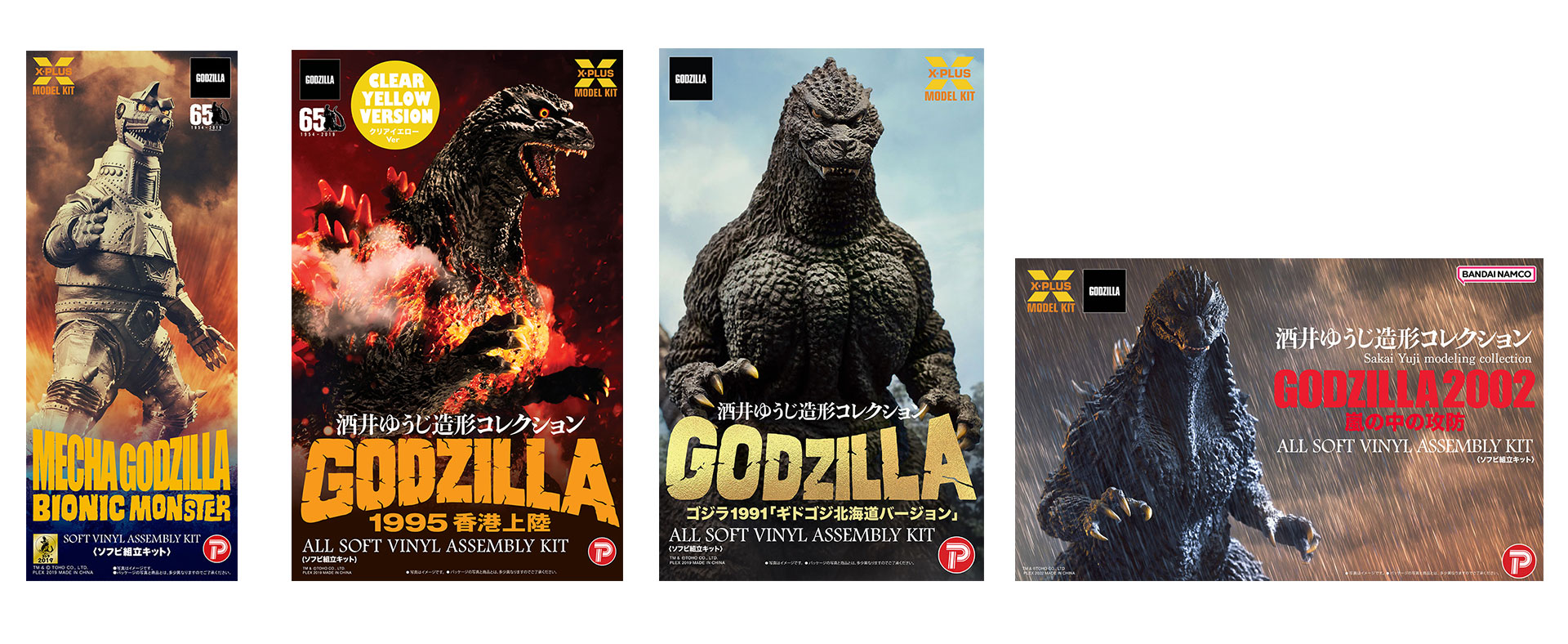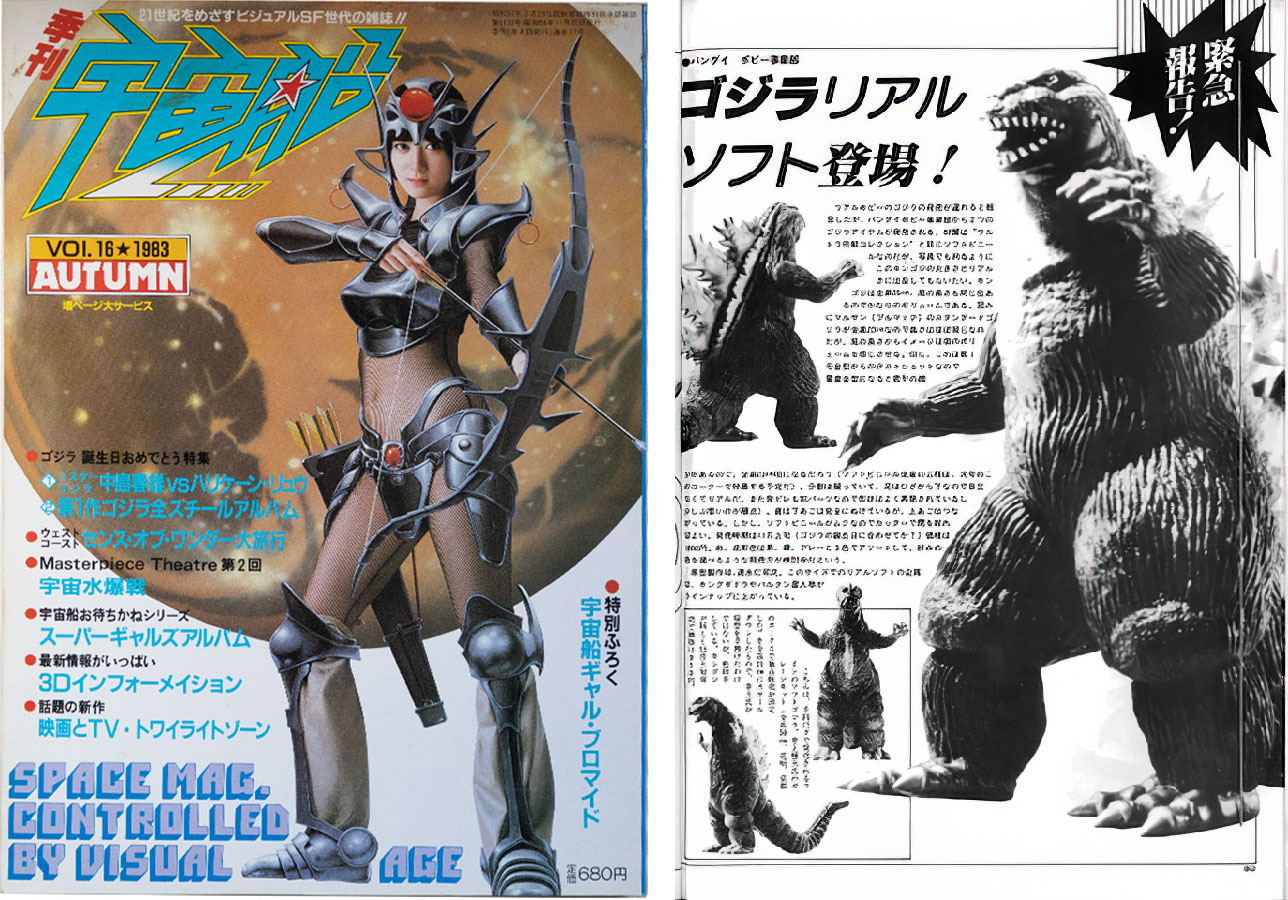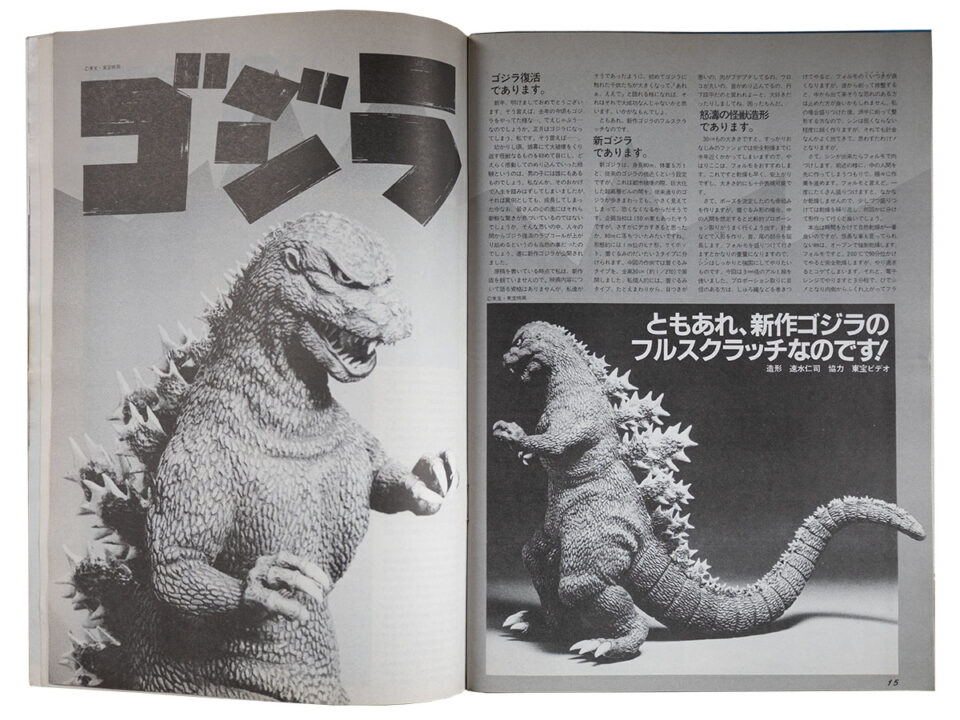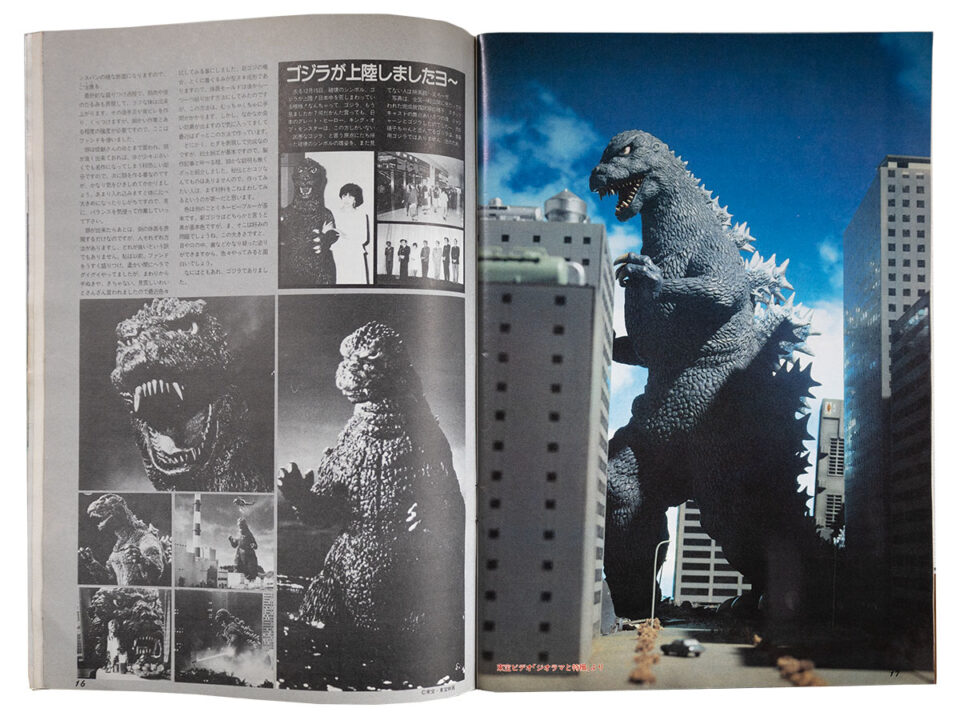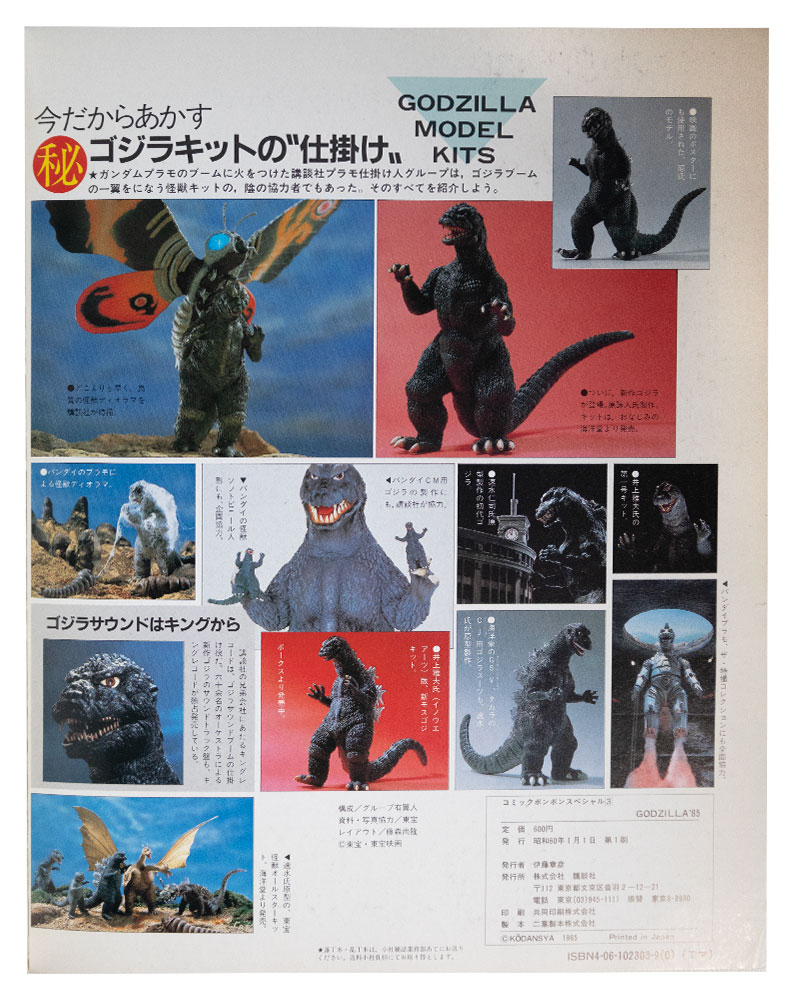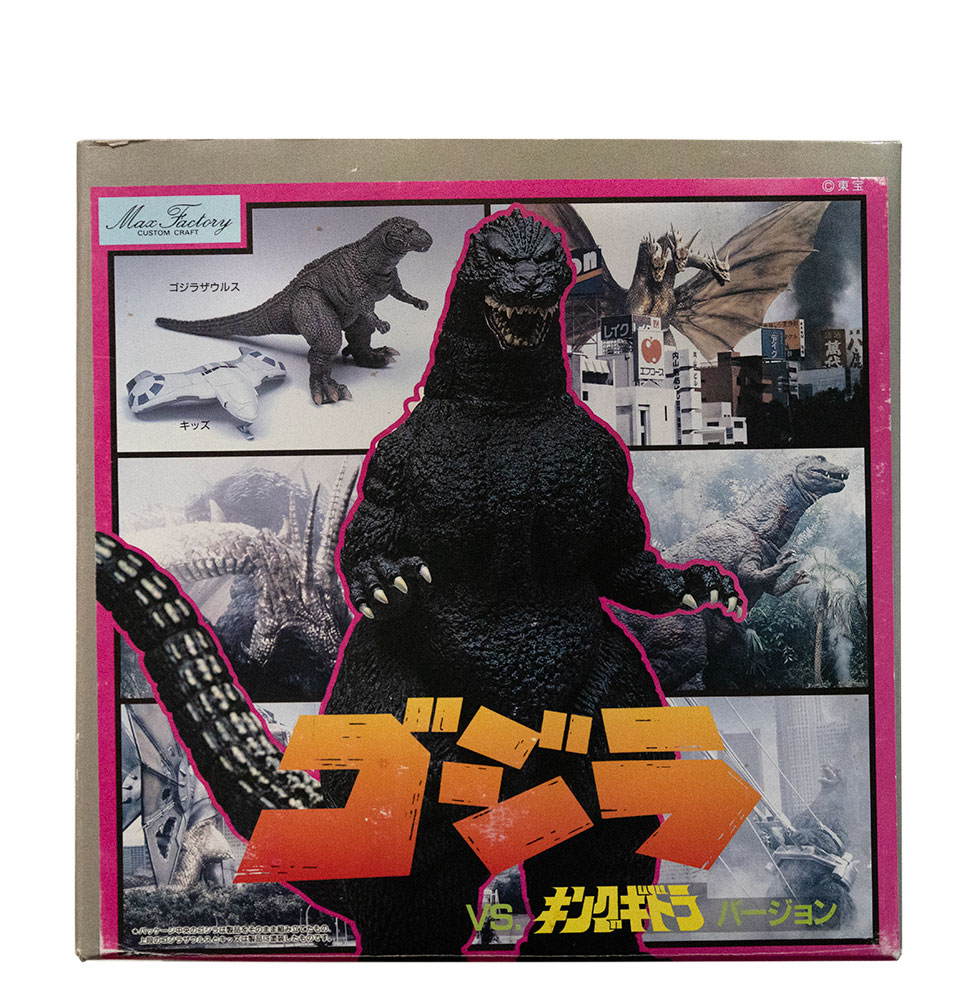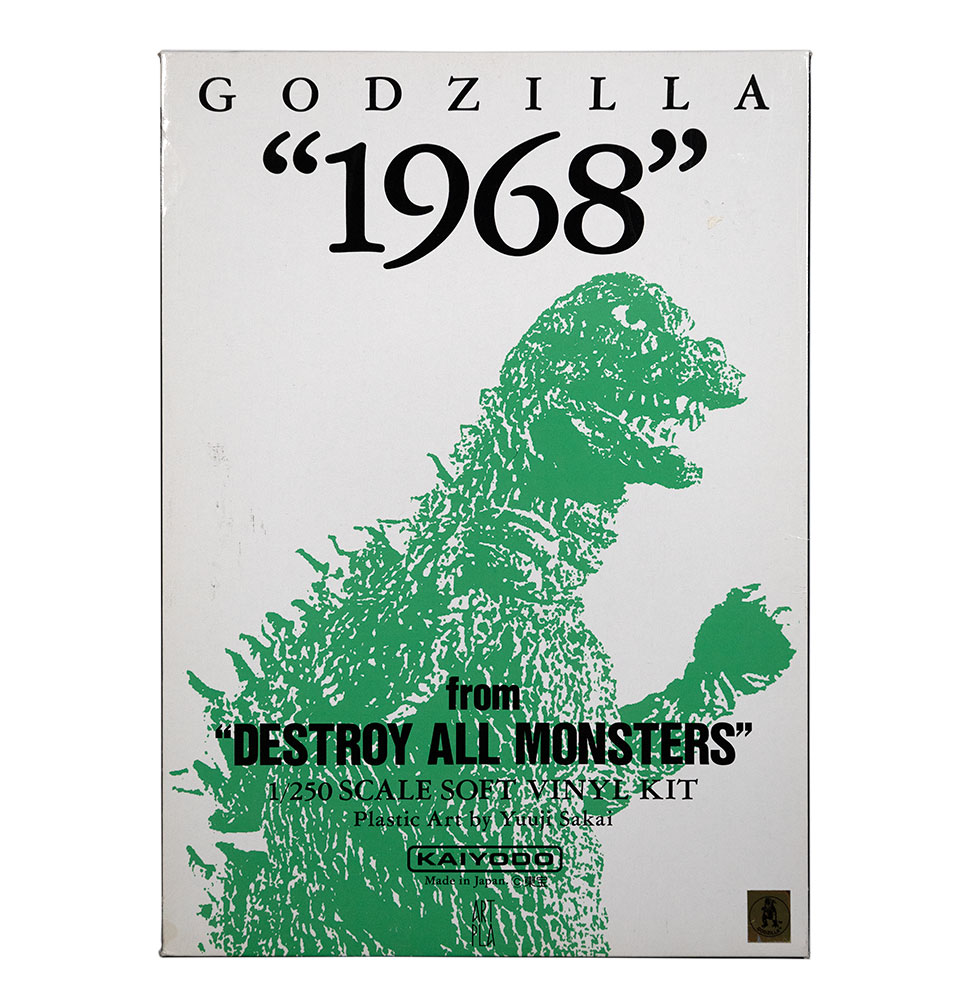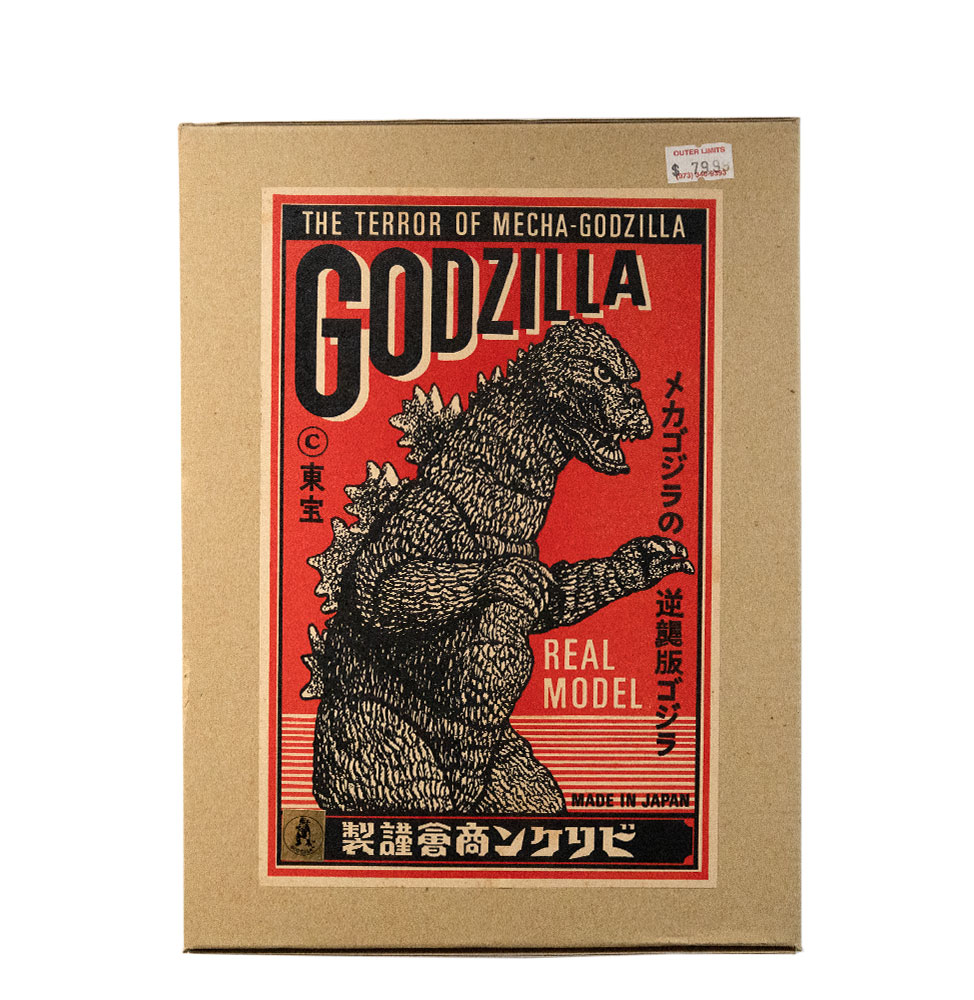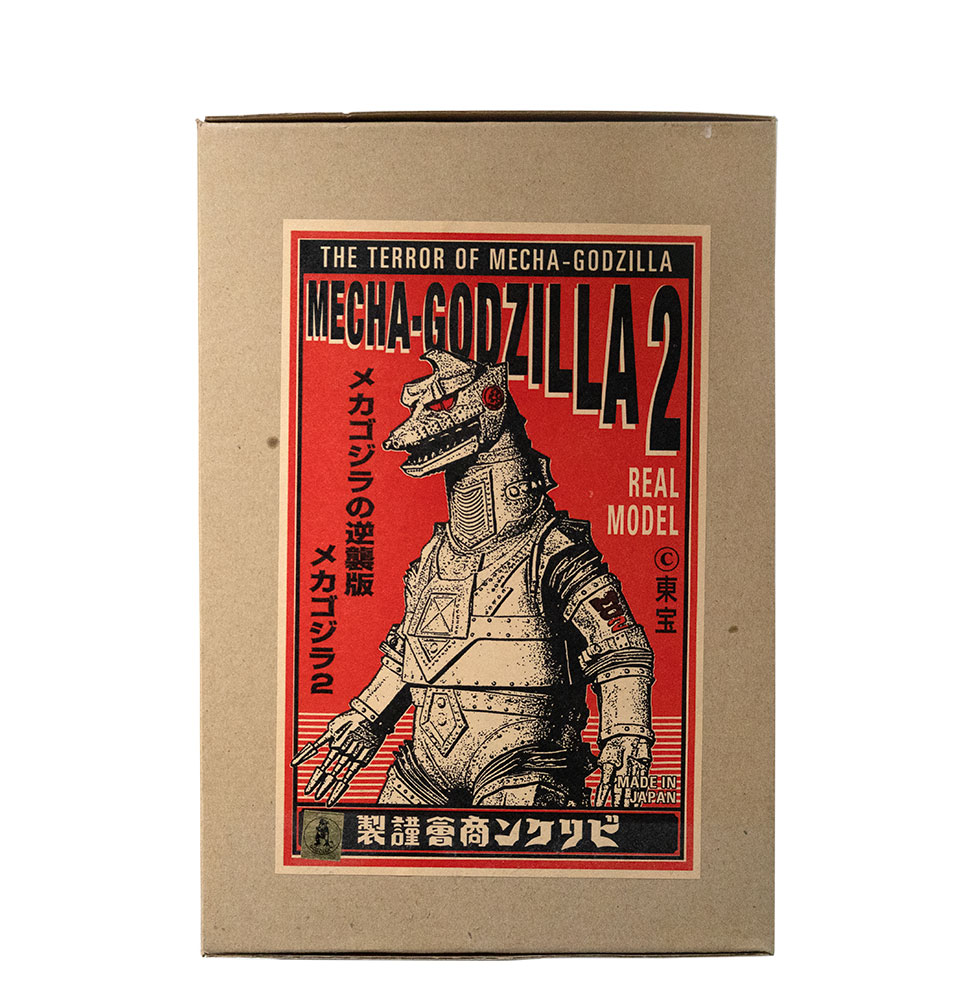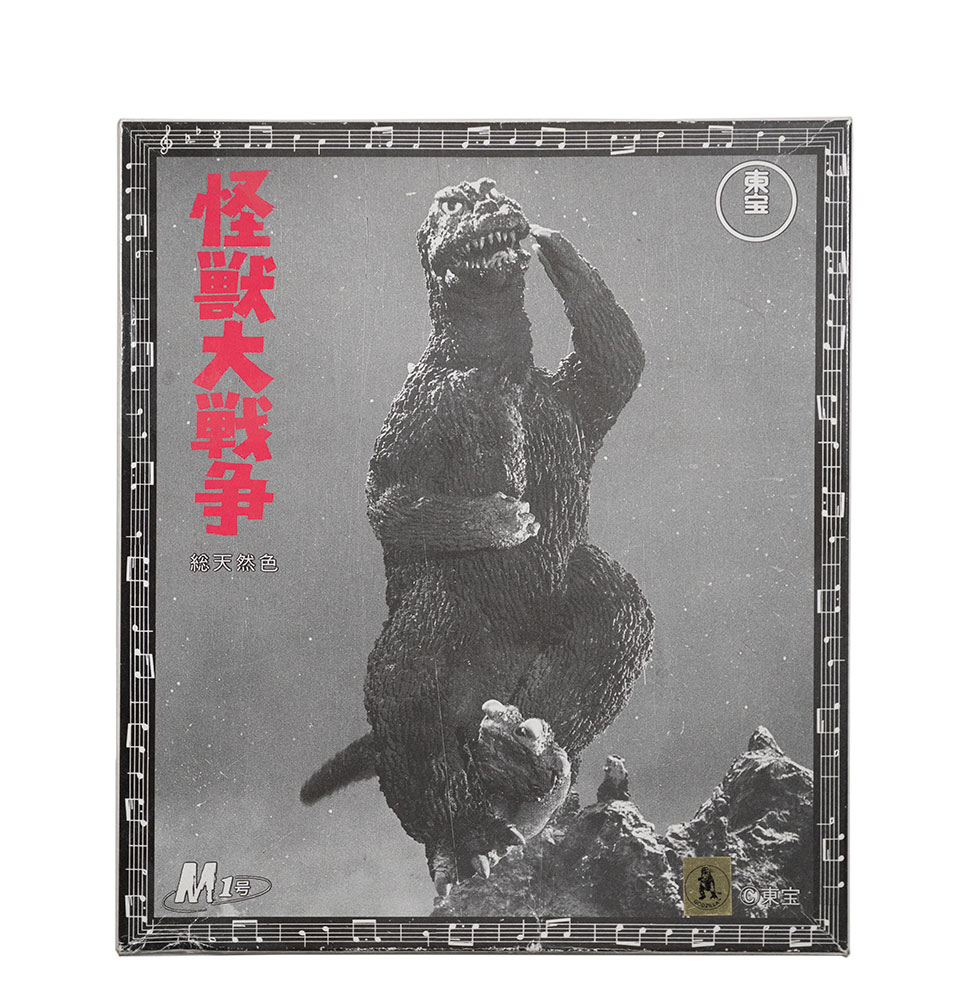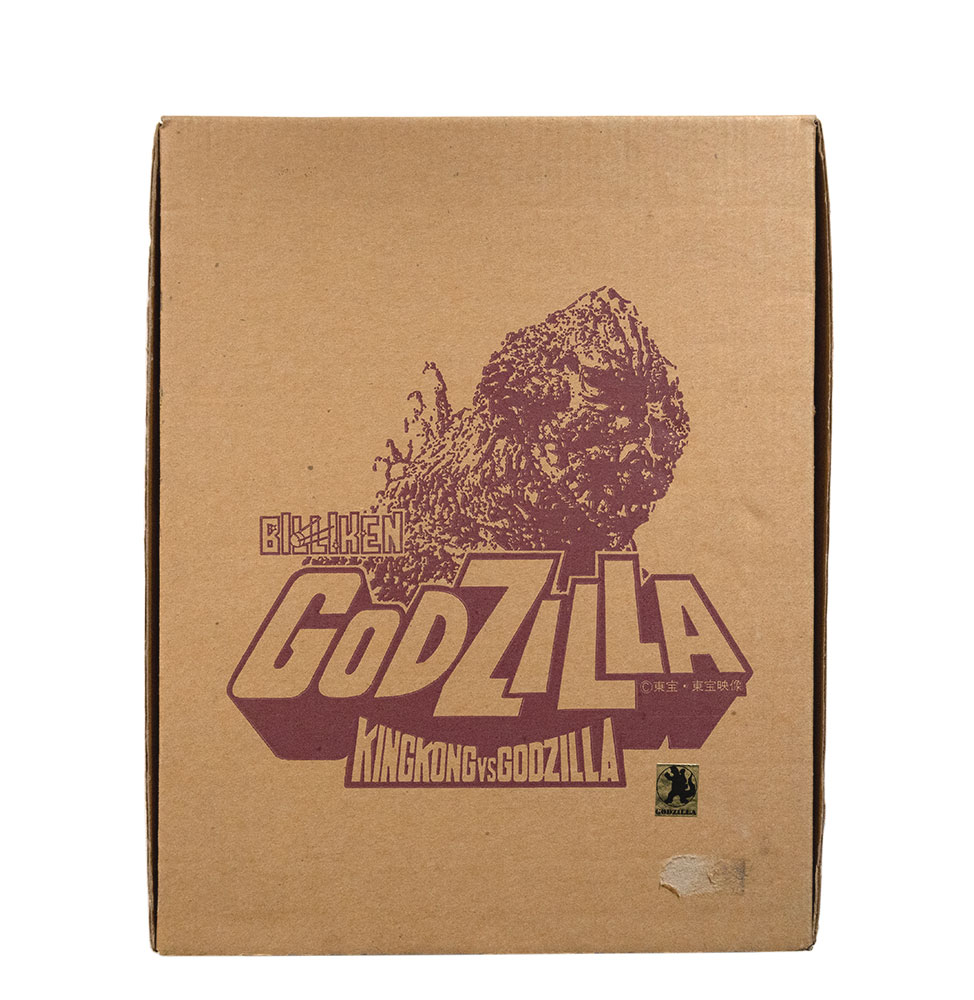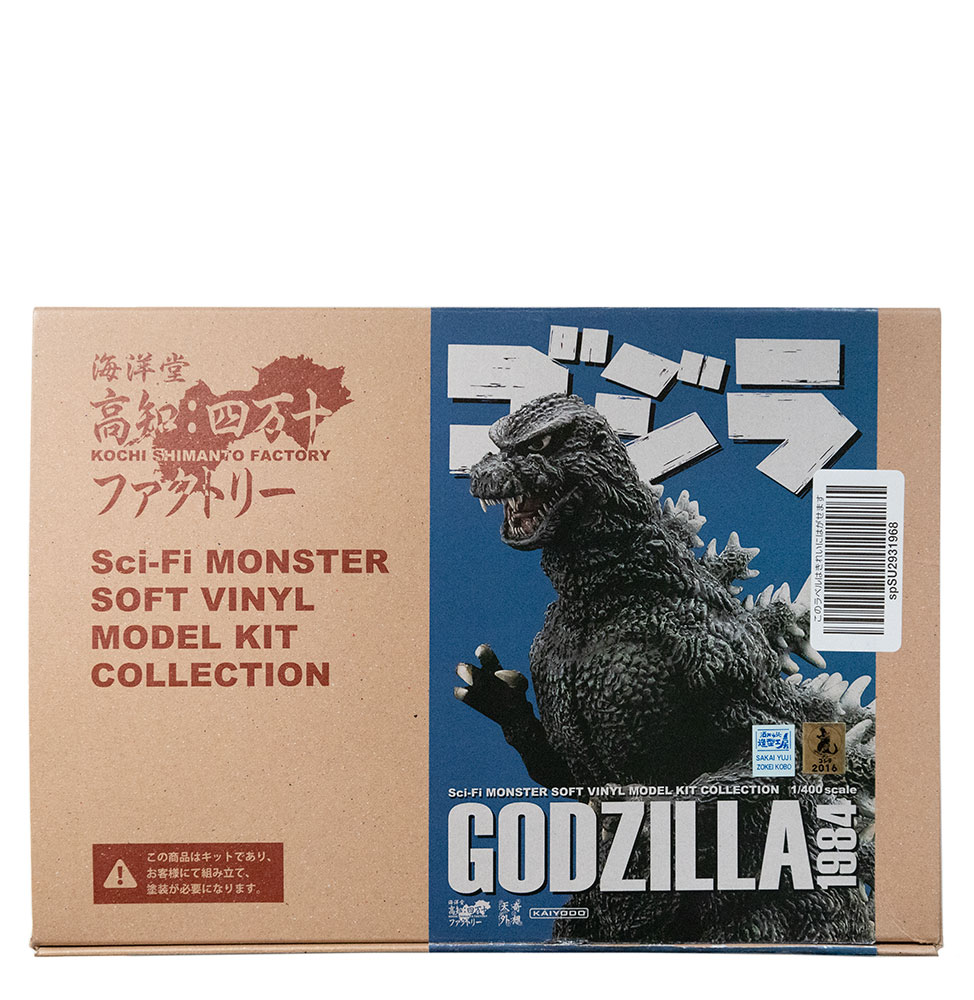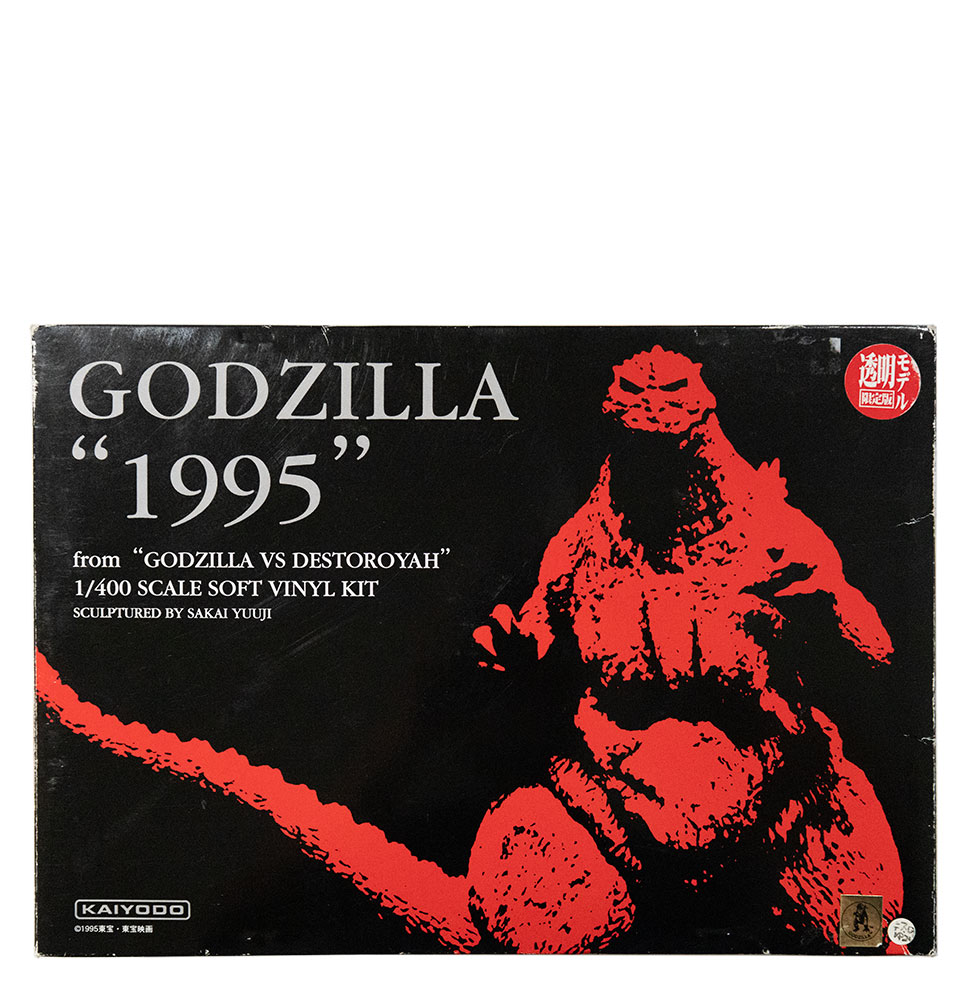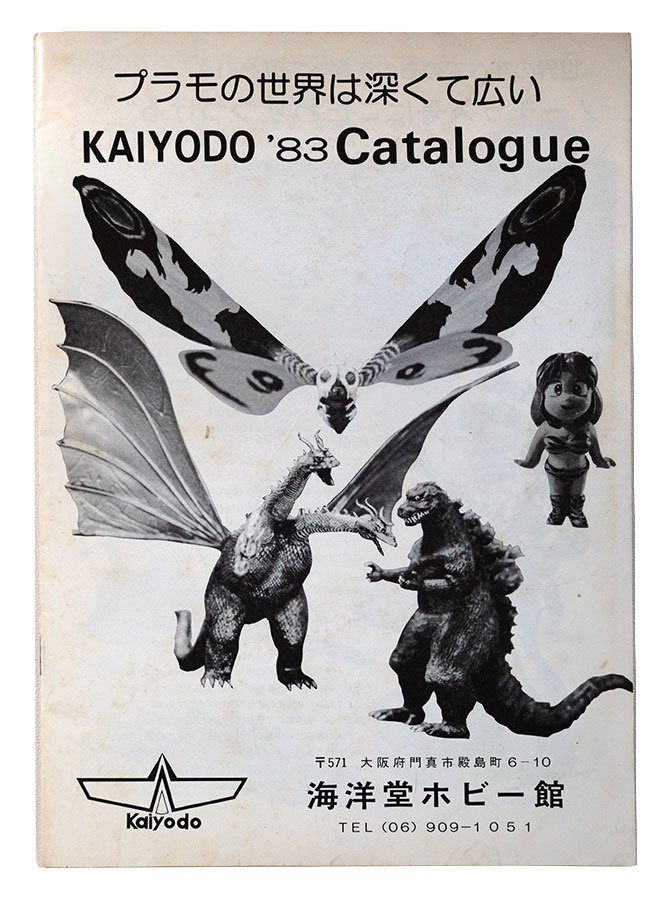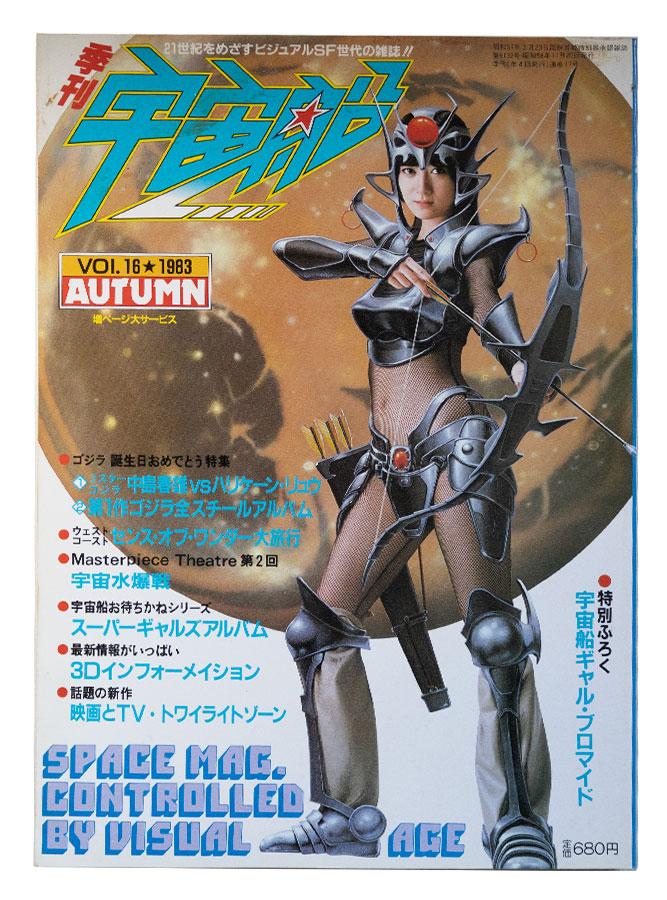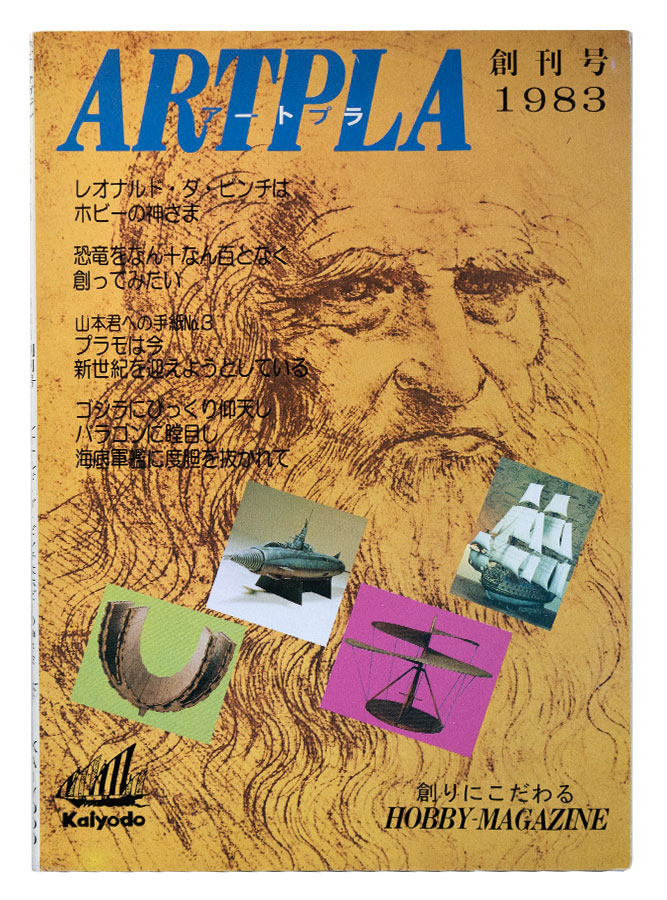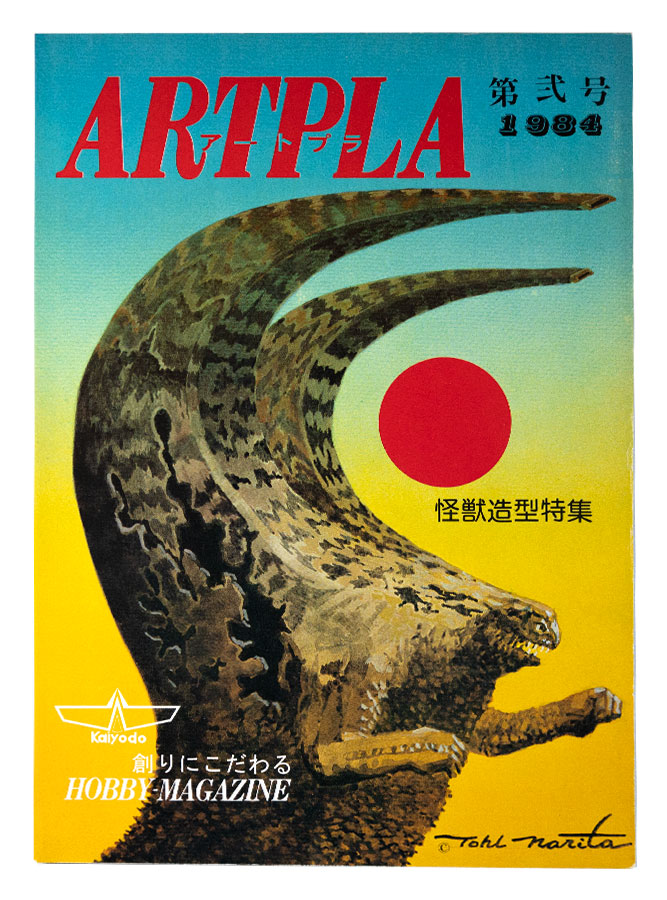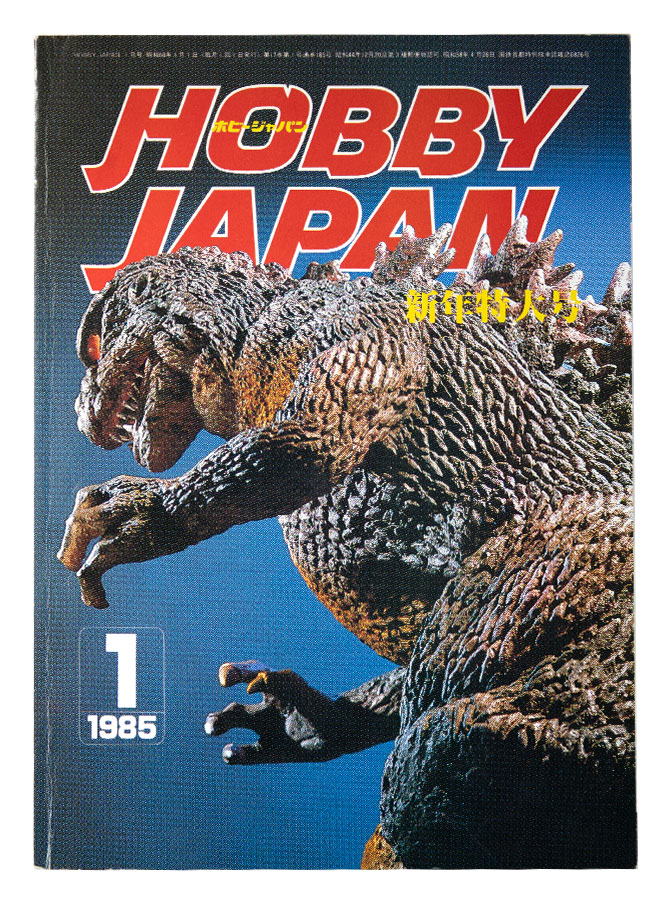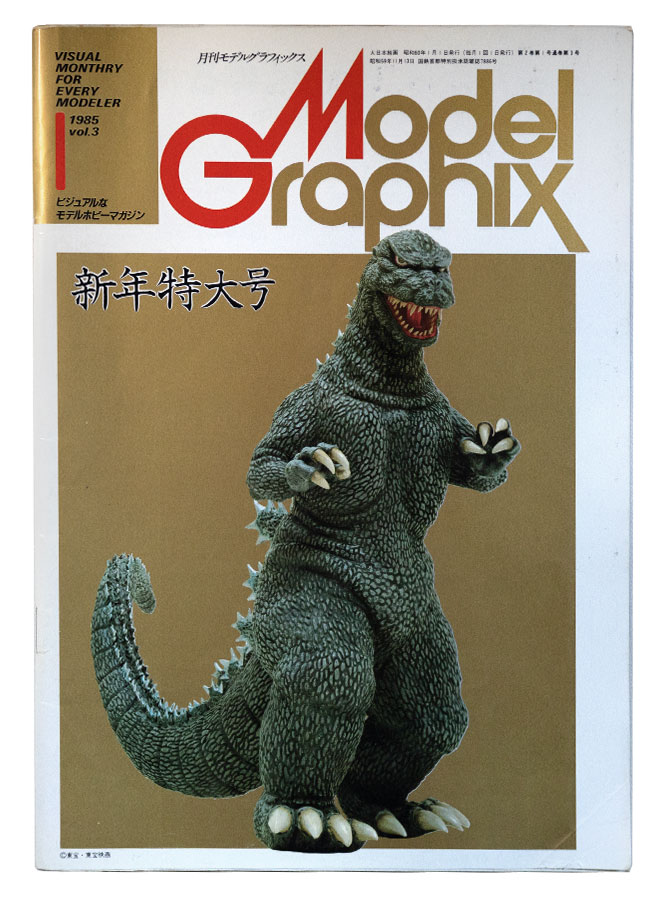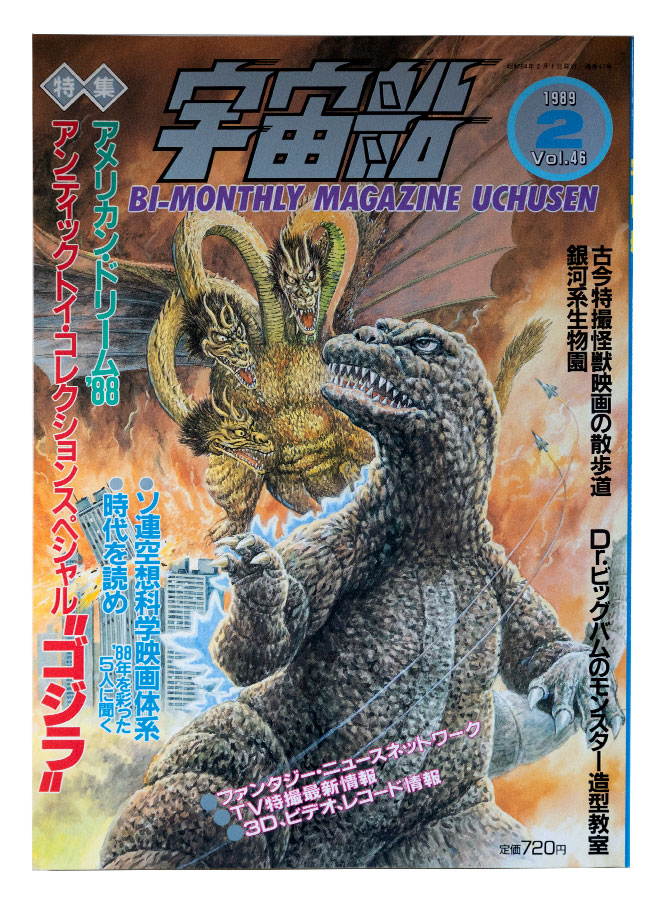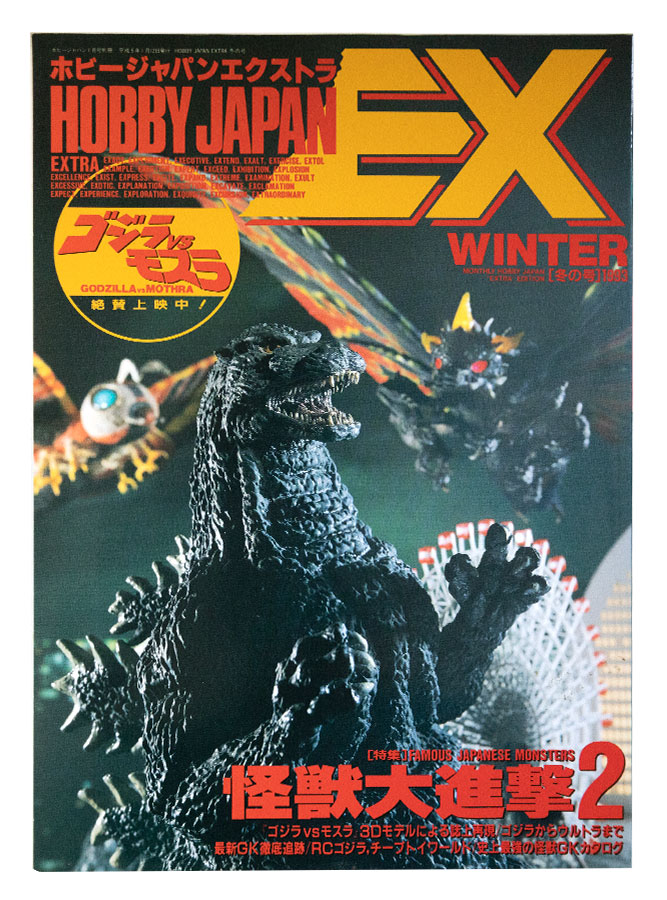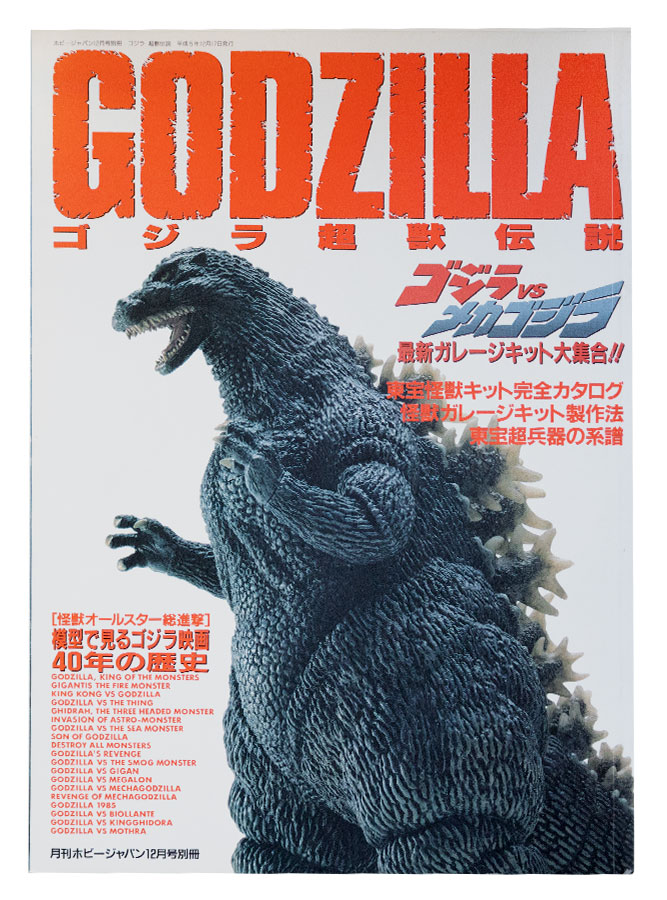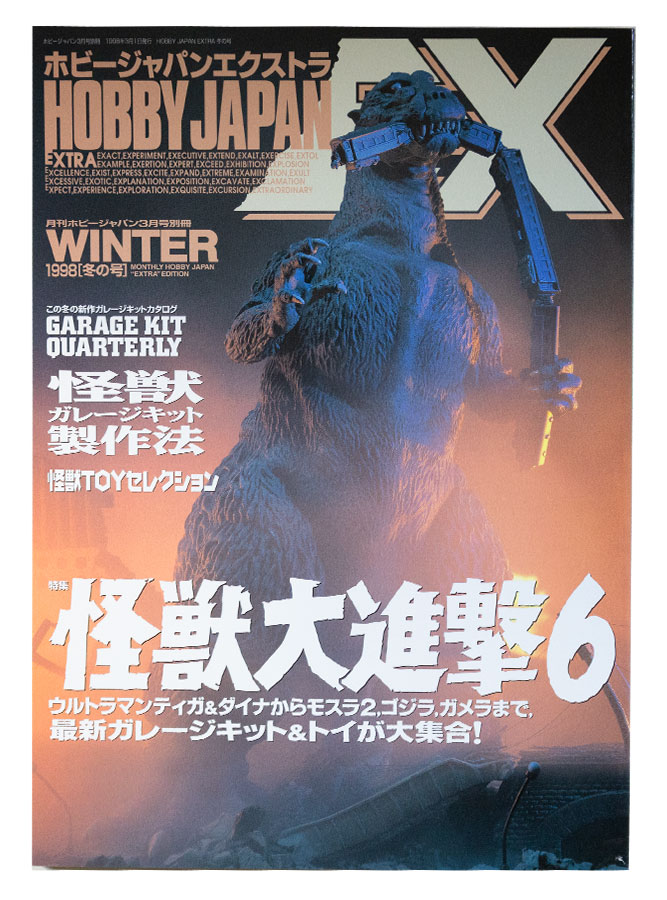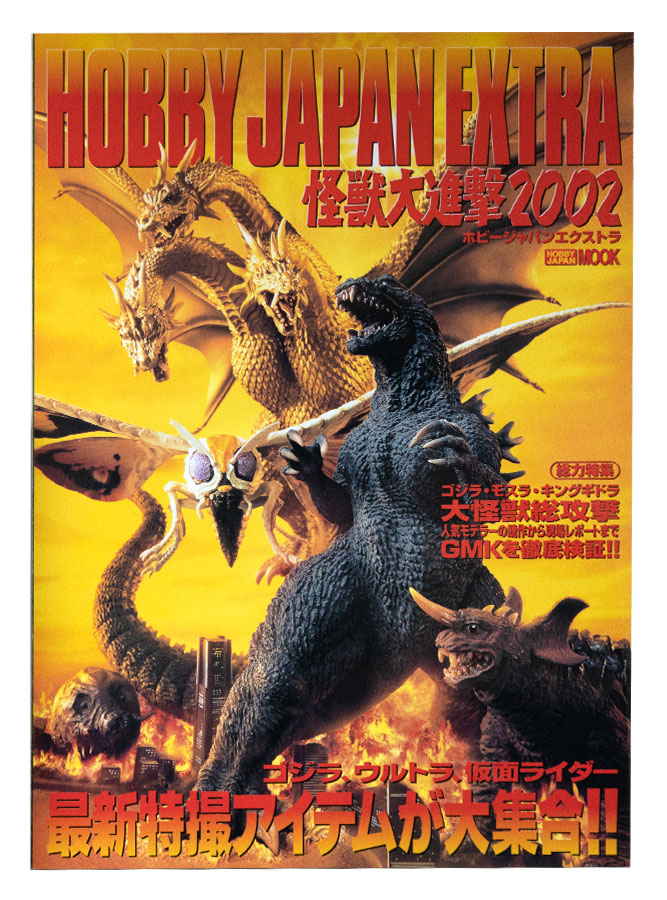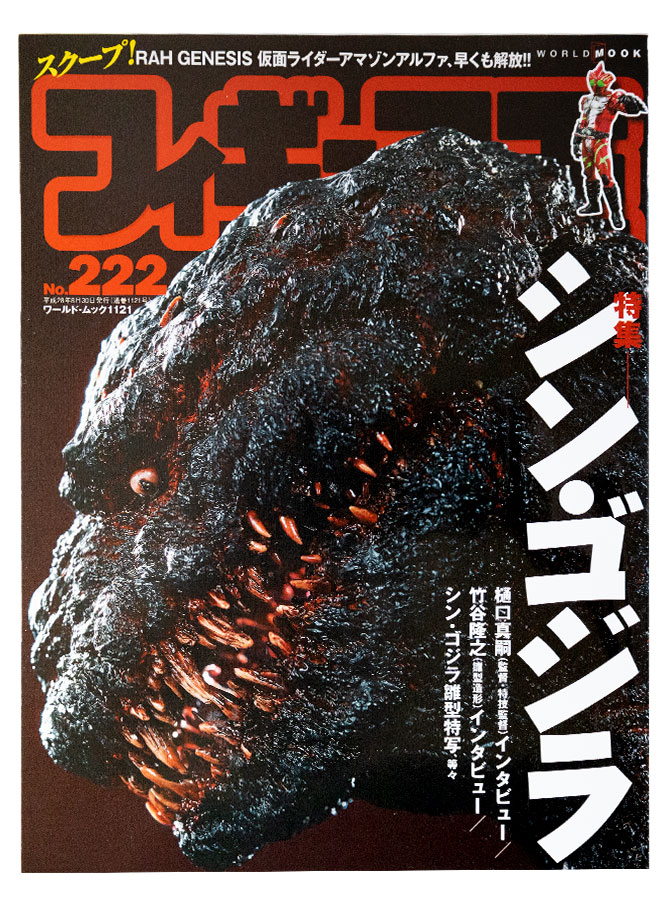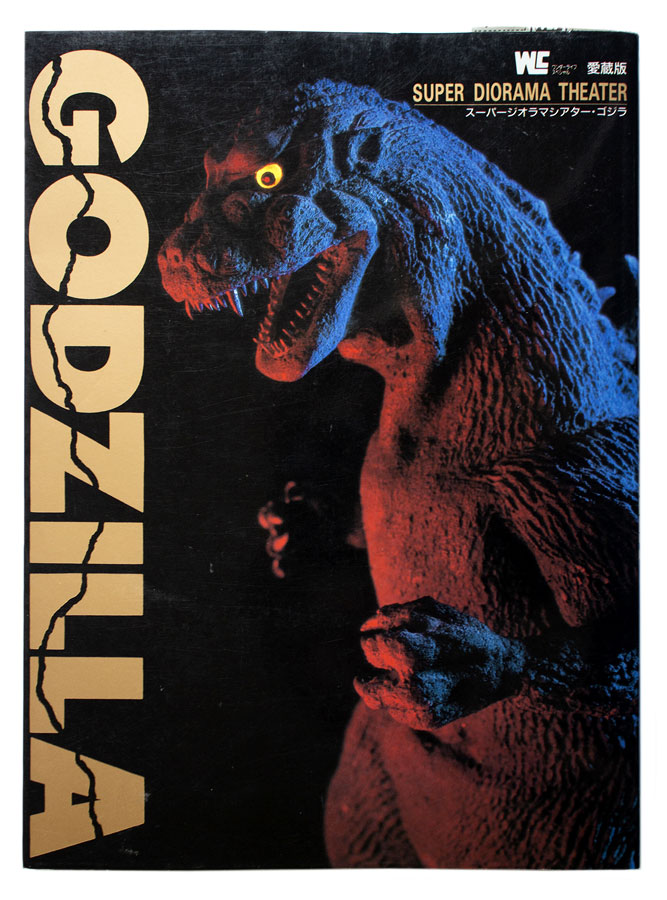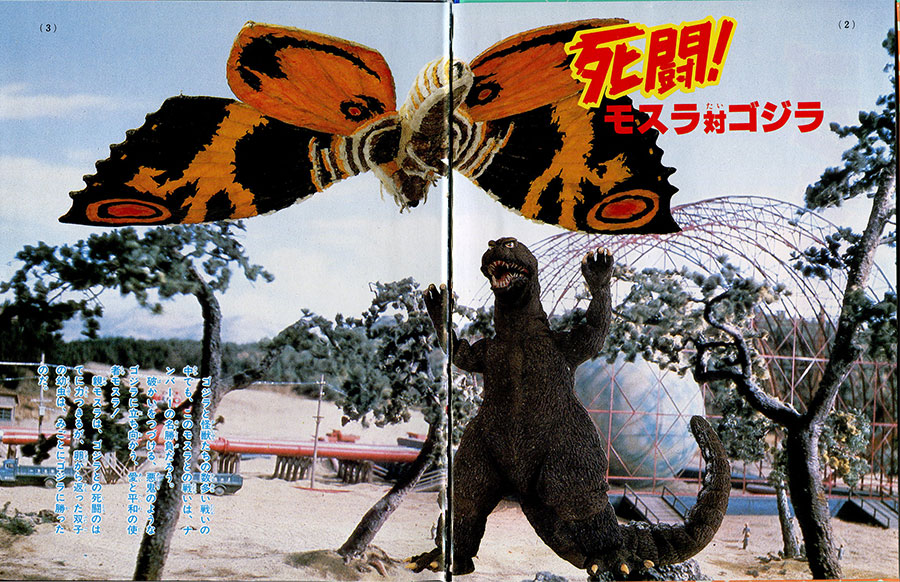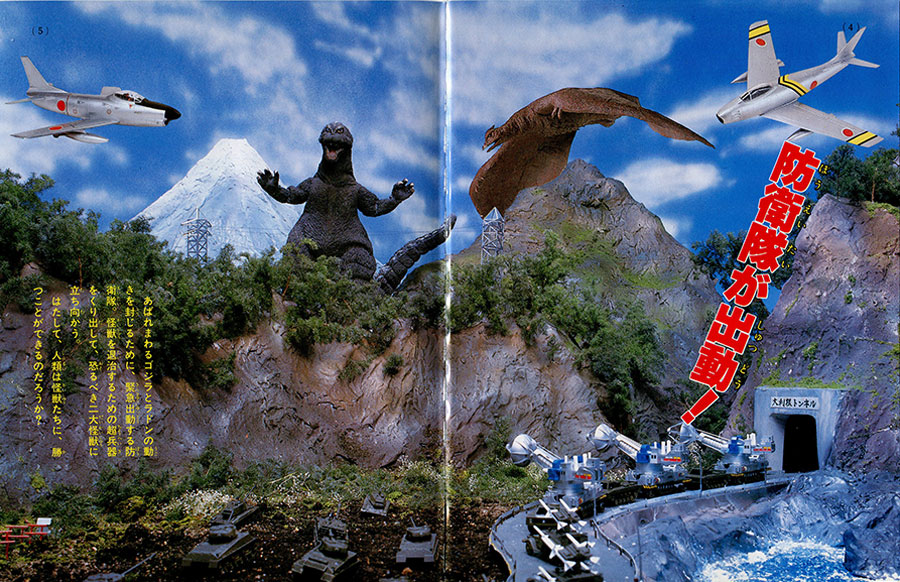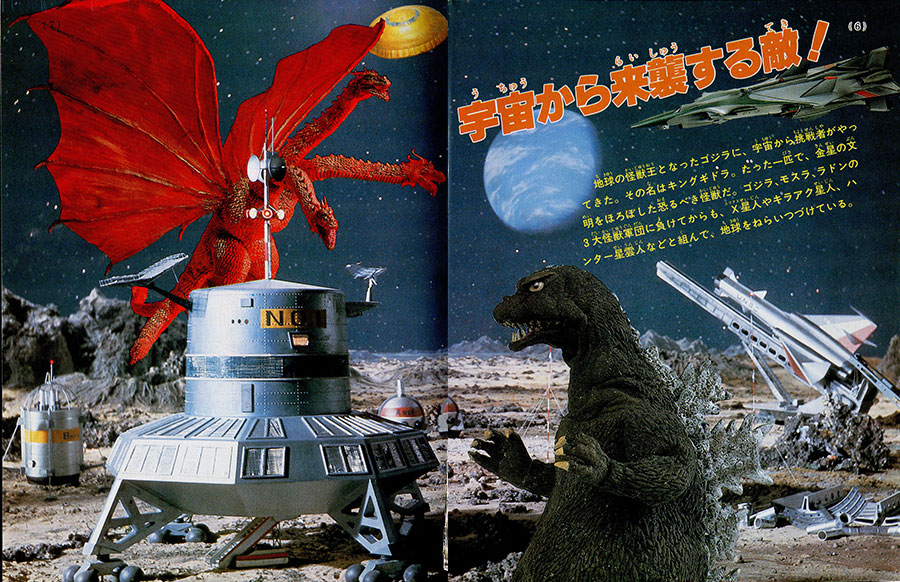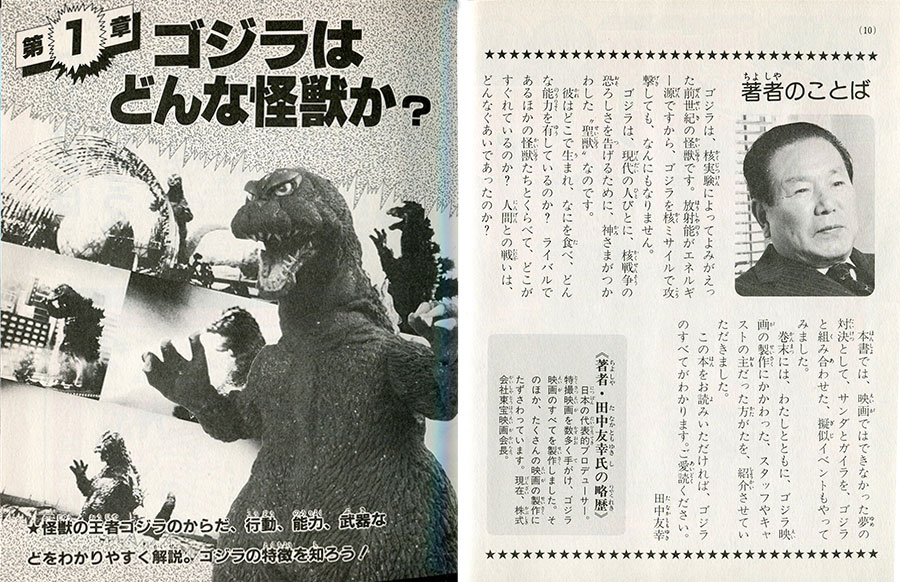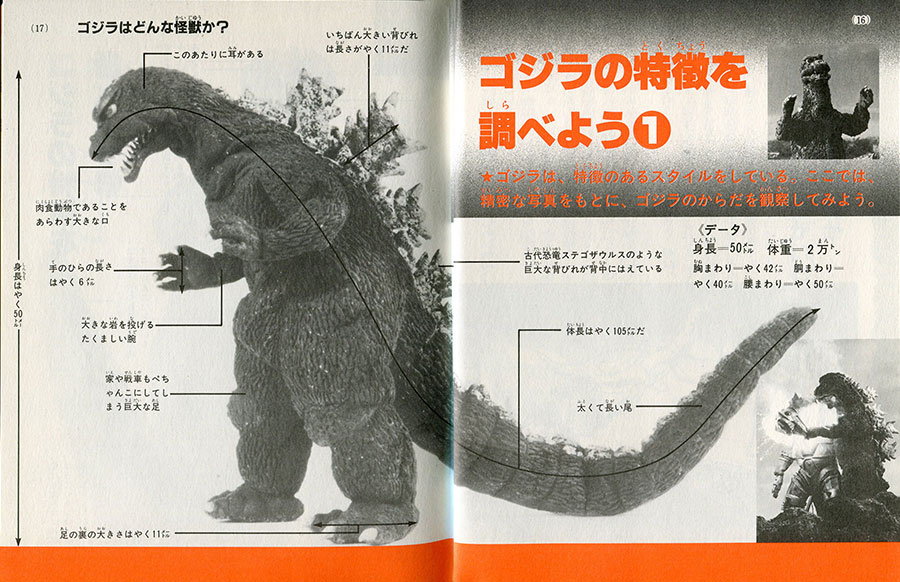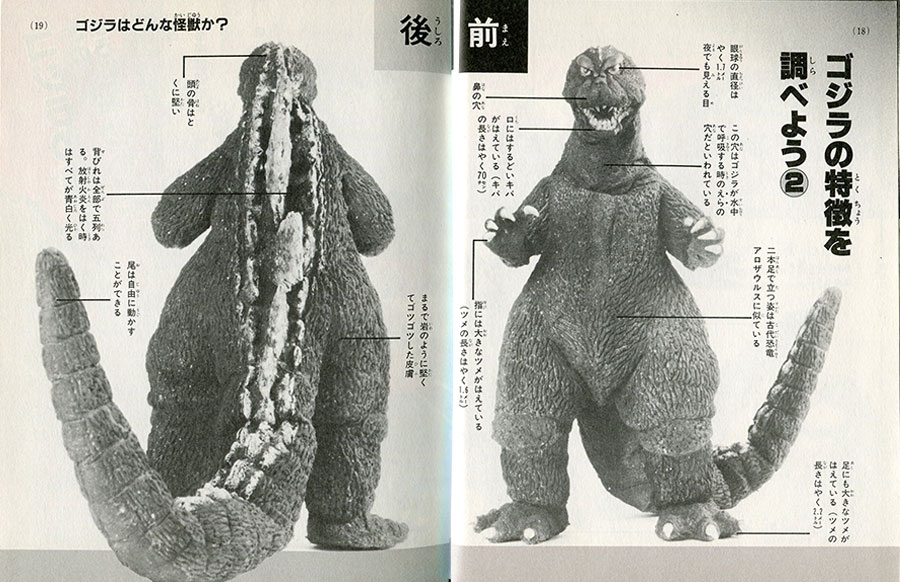宇宙船 (Uchusen Vol. 16 1983) and Bandai Poppy Division advertisement of Godzilla soft vinyl figures
● バンダイポピー事業部 Bandai Poppy Division
ゴジラリアルソフト登場! Godzilla Real Soft (Vinyl) Appears!
リアルホビーのゴジラの発売が遅れると報告したが、バンダイポピー事業部から2つのゴジラアイテムが発売される。材質は”ウルトラ怪獣コレクション”と同じソフトビニールなのだが、写真でも判るようにこのキンゴジの大きさとリアルさに注目してもらいたい。キンゴジは全高25cm、尾の長さも同じ位あるのでかなりのボリュームである。因みにマルサン(ブルマァク)のスタンダードゴジラが全高23cmなので高さはほぼ同じなのだが、尾の長さからイメージは倍のボリュームを感じさせる。但し、これは第1号金型からのテストショットなので量産金型になると若平の縮少があるので、全高23cm程になるだろう(ソフトビニール生産の工程は、次号のこのコーナーで特集する予定だ)。分割は擬っていて、足はひざから下なので目立なくてリアルだ。また背ビレも別パーツなので形状はよく再現されているし少しぶ厚いのが難点)。歯は下あごは完全にぬけているが、上あごはつながっている。しかし、ソフトビニールがムクなのでカッターで間を削ればよい。発売時期は11月上旬(ゴジラの誕生日に合わせてか?)価格は1800円。尚、成形色は黒、緑、グレーと3色でアソートして、好みの色を選べるような販売方が検討中だという。We reported that the release of Real Hobby’s Godzilla will be delayed, but two Godzilla items will be released from the Bandai Poppy Division. The material is the same soft vinyl as the “Ultra Monster Collection,” but as you can see in the photo, I would like you to pay attention to the size and realism of this KinGoji. KinGoji has a total height of 25 cm and a tail of about the same length, so it is quite voluminous. By the way, Marsan’s (Bullmark) standard Godzilla is 23 cm tall, so it’s almost the same height, but the length of the tail makes it look twice as voluminous. However, since this is a test shot from the first mold, there will be some shrinkage in the mass production mold, so the total height will be about 23cm (The soft vinyl production process will be featured in this section of the next issue). The split is simulated, and the legs are below the knee, so they are unobtrusive and realistic. Also, the dorsal fin is a separate part, so the shape is well reproduced, but it is a little thick.) The teeth are completely missing in the lower jaw, but are connected in the upper jaw. However, since the soft vinyl is bulky, you can use a cutter to cut the gaps. The release date is early November (to coincide with Godzilla’s birthday?) The price is 1800 yen. In addition, the molding color is assorted in three colors, black, green, and gray, and it is said that we are considering a sales method that allows you to choose your favorite color.
原型製作は、速水仁司氏。このサイズでのリアルソフトの企画は、キングギドラやバルタン星人等がラインナップに上がっている。Prototype production is Mr. Hitoshi Hayami. King Ghidorah, Alien Baltan, etc. have been added to the lineup for real software projects of this size.
こちらは、千円以下で発売されるラインのソフトゴジラ。井上雅夫氏のガレージキット(全長50cc、近頃、京都のボークスで独占販売が決定全高21㎝にスケールダウンしたもので、井上氏が原型を手懸けたわけではないが、監修をしている。キンゴジと同じく11月上旬発売で価格は950円。 This is the soft Godzilla of the line released for less than 1,000 yen. Mr. Masao Inoue’s garage kit (total length 50cc, recently decided to sell exclusively at Volks in Kyoto. Scaled down to a total height of 21cm. Mr. Inoue did not work on the prototype, but supervised it. Same as KinGoji. It will be released in early November and the price is 950 yen.
